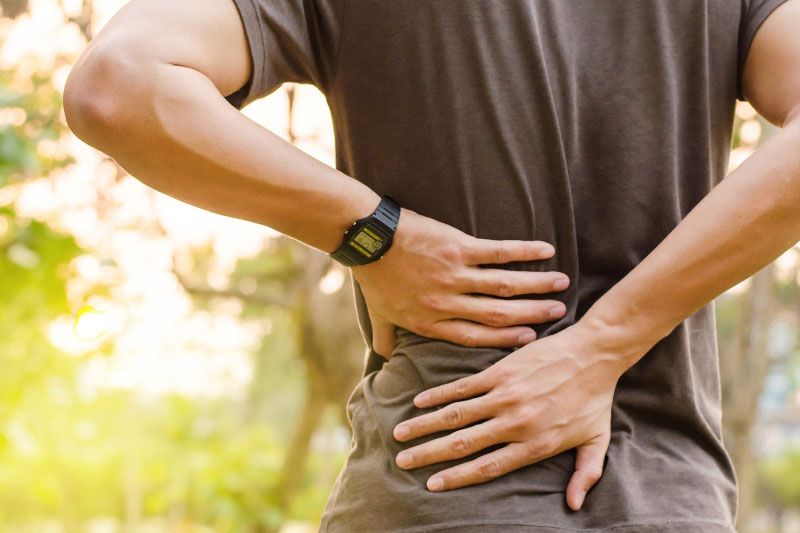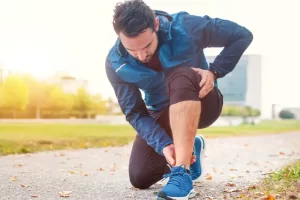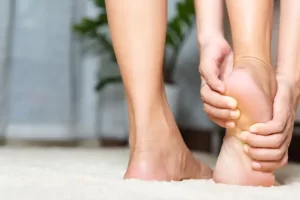Believe it or not, living with chronic low back pain doesn’t have to be a constant struggle! While it can be challenging and affect many aspects of your life, there is hope. Ponte Vedra Spine & Pain Center was started with the belief that managing chronic pain of any kind is not just about finding ways to cope, but about taking control of your health and focusing on proactive steps towards a pain-free life. Here, you can discover expert insights on what causes chronic low back pain, how to diagnose it, implement lifestyle changes for relief, and explore the latest treatments. Together, we can address chronic low back pain and help you enjoy life without limitations.
Do You Know What’s Causing Your Chronic Low Back Pain?
Chronic low back pain can differ from person to person—it’s like a unique experience for each of us. For some, it might be a constant ache in the lower back, while for others, it’s a sharp jab that shows up only during certain activities. The good news is, when you get a handle on what’s causing your chronic low back pain, you can take steps to avoid making it worse and start on the path towards comfort and relief.
Common causes for chronic low back pain that we see at Ponte Vedra Spine & Pain Center in Ponte Vedra, FL include:
- Muscle or Ligament Strain: One of the most frequent culprits of chronic low back pain is muscle or ligament strain. Overuse, heavy lifting, or sudden awkward movements can lead to strains or sprains in the muscles and ligaments of the lower back.
- Herniated Discs: When the soft inner core of a disc in your spine protrudes through the tough outer shell, it can cause inflammation or press on nearby nerves, causing pain. This condition, known as a herniated or slipped disc, is a common cause of chronic low back pain.
- Spinal Stenosis: This condition occurs when the spinal canal narrows, putting pressure on the spinal cord and nerves. It can lead to chronic low back pain or leg pain especially in older adults. Other frequent symptoms are numbness, heaviness, or fatigue in the legs when walking.
- Arthritis: Osteoarthritis and other forms of arthritis can affect the lower back, leading to chronic lower back pain and stiffness. Over time, the wear and tear on the spine’s joints (called facet joints) can contribute to chronic low back pain.
- Sciatica: Sciatica is a condition characterized by pain, tingling, or numbness radiating from the lower back down the leg due to irritation or compression of the sciatic nerve or one of its roots.
- Poor Posture: Poor posture or body mechanics refer to the way a person positions their body during various activities. It includes the alignment of the spine and limbs while sitting, standing, lifting, or performing any physical task.
No matter what’s causing your chronic low back pain, Dr. Eli Loch, D.O., at Ponte Vedra Spine & Pain Center is dedicated to helping you find relief. He aims to not only alleviate your pain but also correct the root cause to achieve long-lasting improvements in pain and function.
Which Tests Are Best for Diagnosing Chronic Low Back Pain?
Dealing with ongoing chronic low back pain can be tough, but at Ponte Vedra Spine & Pain Center, we’re here to help you through it. To figure out what’s causing your pain, there are different tests available, each suited for specific situations. Dr. Eli Loch, D.O., will carefully assess your symptoms and other medical problems. By understanding your pain thoroughly, we can find the right solution, making your life more comfortable and easier to manage.
Common tests used to diagnose chronic low back pain at Ponte Vedra Spine & Pain in Ponte Vedra, FL include:
- Physical Examination: A thorough physical examination is often the first step in diagnosing chronic low back pain. Dr. Eli Loch, D.O., will assess your range of motion, reflexes, and the location and nature of your pain.
- Imaging Studies: Imaging tests, such as X-rays, MRI (Magnetic Resonance Imaging), and CT (Computed Tomography) scans, can provide detailed images of your spine. These images can reveal structural abnormalities, such as herniated discs or spinal stenosis.
- Nerve Studies: Electromyography (EMG) and nerve conduction studies can help identify nerve-related issues contributing to your pain.
- Blood Tests: In some cases, blood tests may be ordered to rule out conditions such as infections, inflammatory disorders, or autoimmune problems.
What is the Best Way to Handle Chronic Low Back Pain?
In the pursuit of managing chronic low back pain, the key lies in a two-fold approach: interventions for chronic low back pain relief and targeted lifestyle changes. It is often the case that interventions are started early to get pain relief. Once that is achieved, targeting lifestyle interventions can help prevent pain from worsening or occurring again. Now, let’s take a closer look at how each approach can be used to effectively manage chronic low back pain at Ponte Vedra Spine & Pain.
1. Medical Interventions for Chronic Low Back Pain Relief:
- Physical Therapy/Home exercise program: Often serves as a cornerstone of chronic low back pain treatment. Targeted exercises and manual techniques can help improve your mobility, strengthen supporting muscles, and reduce pain.
- Injections: Epidural steroid injections, facet injections, nerve blocks, trigger point injections, or ligaments can provide relief for certain conditions. These injections deliver anti-inflammatory medications directly to the affected area, reducing pain and inflammation.
- Medications: While medications may sometimes be needed, we try to stay away from the chronic use of medications, particularly opioids.
2. Lifestyle Changes for Chronic Low Back Pain Relief:
- Functional Movement Analysis: During this testing, we evaluate your movement patterns and determine where there are imbalances or weaknesses. Once we have this knowledge, a specific exercise or stretching program can be implemented to correct the issues. Dr. Eli Loch, D.O., can guide you in developing a safe and effective exercise regimen.
- Ergonomics: Ergonomics plays a crucial role in preventing and managing chronic low back pain. Ensure that your workspace, furniture, and posture are conducive to good spinal health. Adjusting your desk chair, computer monitor height, and keyboard placement can make a significant difference.
- Weight Management: Excess weight places added strain on your lower back, particularly the lumbar region. Maintaining a healthy weight through proper diet and exercise can help alleviate some of this pressure.
- Diet: A balanced diet rich in anti-inflammatory foods, such as fruits, vegetables, and fatty fish, may help reduce pain and inflammation. Additionally, staying well-hydrated is essential for maintaining healthy spinal discs.
Can You Fully Recover from Chronic Low Back Pain?
There’s reason for optimism when it comes to chronic low back pain. While achieving a full recovery varies for each individual, remarkable progress can be made with the right approach. To start your journey to a pain-free life, schedule an appointment with Dr. Eli Loch, D.O., today!









